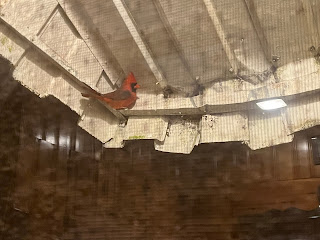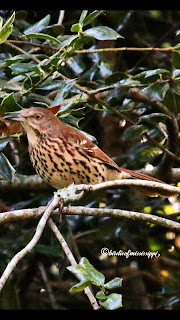TROPICAL LOOKING AMERICAN GOLDFINCH - 7/22/20
TROPICAL LOOKING AMERICAN GOLDFINCH
BY: PEGGY WILLIAMS AKA Birdie of Mississippi
Last week on Facebook’s - Mississippi Birding site several people posted photos of American Goldfinches that they had sited and photographed in their yards. All of these Birdies were amazed to see these tropical looking birds in their yards this late in the summer. I have been pleasantly surprised and had my own heart begin to race to see them in my yard the past two weeks. Three of my friends excitedly sent me photos and videos that they had captured. They were so excited because they had never seen one in real life - much less in their own yard! So my question has been “I wonder why these yellow beauties are still here in Mississippi and not headed north?” As I scanned the photos posted by Birdies on the web I found photos of American Goldfinches that had been taken in both June and July from the Gulf Coast of Mississippi all the way up to Canada, so that showed me that they hadn’t all stayed south, but some have stayed behind and caused a stir in “birdie watchers.”
Generally when birds stay behind they have a motive. There are several reasons for these Goldfinches to stay here in Mississippi. One big reason is food supply. Goldfinches like milkweed and thistle seeds and June and July are when these plants bloom and produce their seeds. If there is a plentiful supply of these seeds then they will hang around to breed during these months. When you see the males have their bright colored feathers showing it is because they are trying to attract females to breed. They are late in the season breeders because they want this food source to be available for themselves and for their hatchlings. Gold finches also have favorite flowers that they enjoy eating the seeds of. Of course, one of their favorite flowers is the Black Oil Sunflower and many farmers plant these seeds to sell as a crop, but there are many birds that will go to these fields and help themselves. They also enjoy flowers that people plant in their flower gardens such as coneflowers, alder, asters and even grass seed. There are also fields of weeds that supply them with thistle seeds that can gather great groups of 50 to 100 Goldfinches to feast on these seeds. I haven’t been blessed to see this many at one time, but I have had 15 to 20 come to my backyard in the early spring if I have Sunflower and Njyer seeds in my feeders. Well stocked backyard feeders are another reason that Goldfinch linger in our area.
Since we have been forced to be homebound during this pandemic there are many newcomers to “bird watching.” Among these newcomers are young kids who excitedly share with others about the birds that have come to visit their feeders. I have found that due to the small size and brightly colored feathers of the American Goldfinch it has quickly become their favorite bird to watch. Blue Jays because they are very territorial often pick on these small birds to defend their feeding grounds. This has resulted in some little goldfinches being found mortally wounded in some backyards much to the heart break of children who love them.
The Goldfinch is also such a beloved bird that three states have chosen it as their state bird – Iowa, New Jersey and Washington. Depending on what part of the country they are in they are called American, Eastern, or Willow Goldfinches with slight changes in their appearance, but they all have bright yellow body feathers with black wings and cap with a bright orange bill. As I “Look at the birds of the air…” Matthew 6:26 – the male American Goldfinch has become one of my favorites to enjoy watching and photographing.
My photos may be viewed & “LIKED” on Facebook, Instagram and Pinterest - “Birdie of Mississippi”. E-mail: birdieofmississippi@gmail.com - Read my Blog @ http://www.birdieofmississippi.blogspot.com




Comments
Post a Comment